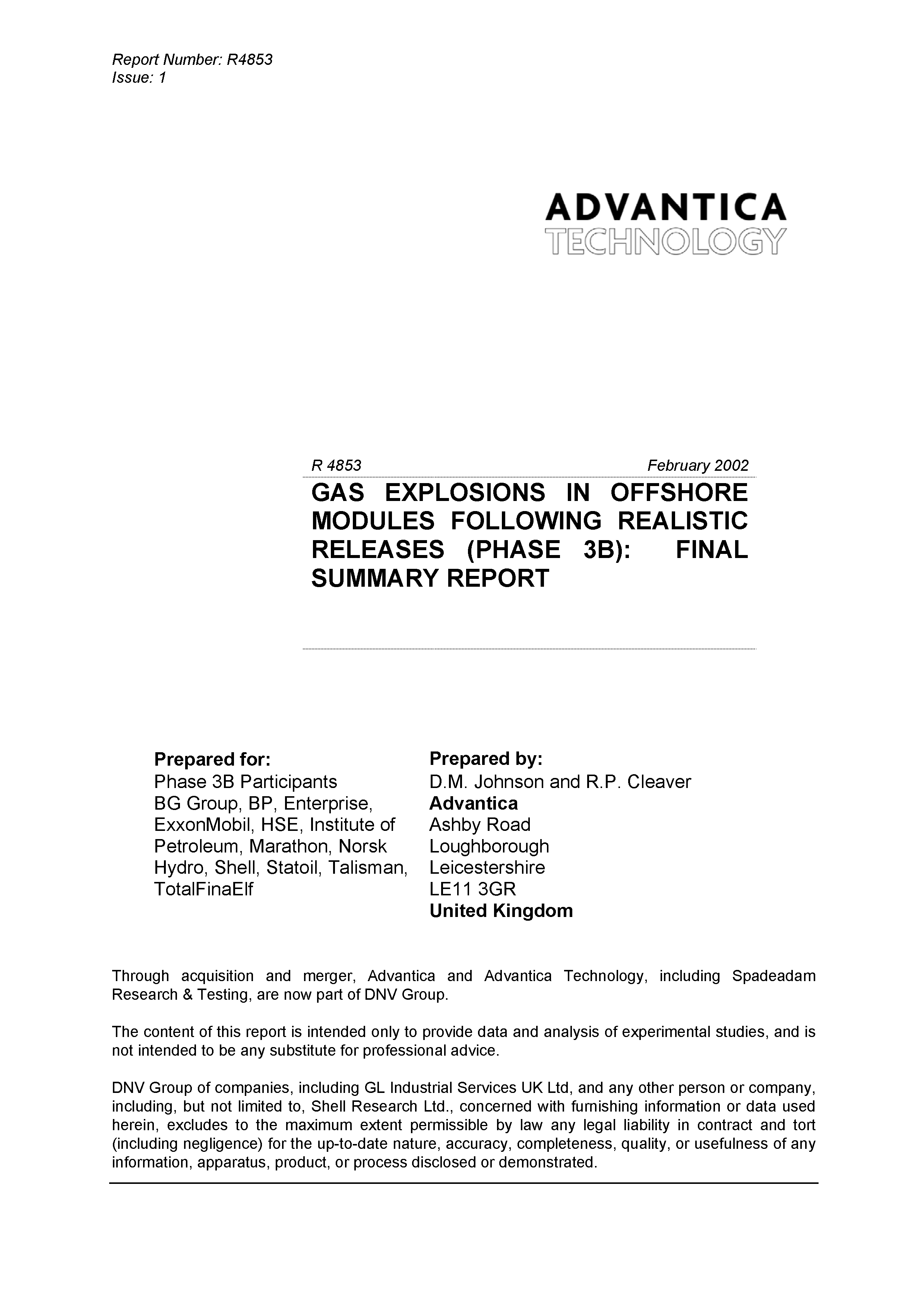Advantica R4853
Gas explosions in offshore modules following realistic releases
Final summary report
BFETS Phase 3b

FABIG Members: Log-in to access all FABIG resources LOG IN
SUMMARY
The Phase 2 and Phase 3a projects showed that it is generally not practical to design an offshore platform against the 'worst case' explosion. Therefore, a risk-based approach for design against explosion hazards is needed, in which the risks are reduced to as low as reasonably practicable. In taking a risk-based approach, it is important that the full spectrum of possibilities is adequately understood. This includes scenarios involving ignition of a non-homogeneous gas cloud occupying only part of the module. The Phase 2 and 3A projects had, however, been conducted with homogeneous gas clouds throughout the full module, and in most cases the mixture had been at a stoichiometric concentration. There was therefore a clear need to investigate more realistic conditions.
As part of this investigation, a JIP was carried out to study the dispersion of high pressure gas releases in offshore modules. This revealed that the releases produce a variety of different types of dispersion or gas accumulation behaviour, depending on particular combinations of perimeter confinement, congestion and release direction and ambient weather. However, whilst it was possible for large recirculation regions of approximately uniform concentration to be produced, by no means all of the releases resulted in a uniform concentration distribution of the type studied previously in the explosion projects.
As a result, a project known as Phase 3b was undertaken to gain information on the explosion loads generated in more realistic conditions. The project comprised both experimental and modelling studies. The primary objective of the project was to conduct experiments to assess the explosion loads produced by realistic gas clouds. As the effects produced in an explosion are scale dependant, the best form of validation is against data from experiments at a scale comparable to an offshore module. However, the cost of conducting such experiments prohibits extensive parameter variation. It was therefore decided that the project should include a mix of large-scale and medium-scale experiments, with the medium-scale tests providing a much wider parameter variation than the large-scale tests. In addition, variation in the composition of the fuel was of interest. Comparative studies of the turbulent combustion characteristics of different fuel mixtures can be carried out at small scale, and laboratory-scale experiments were therefore included within the programme of work.
Online purchase options:
Non-Members of FABIG are able to purchase PDF copies of the reports.